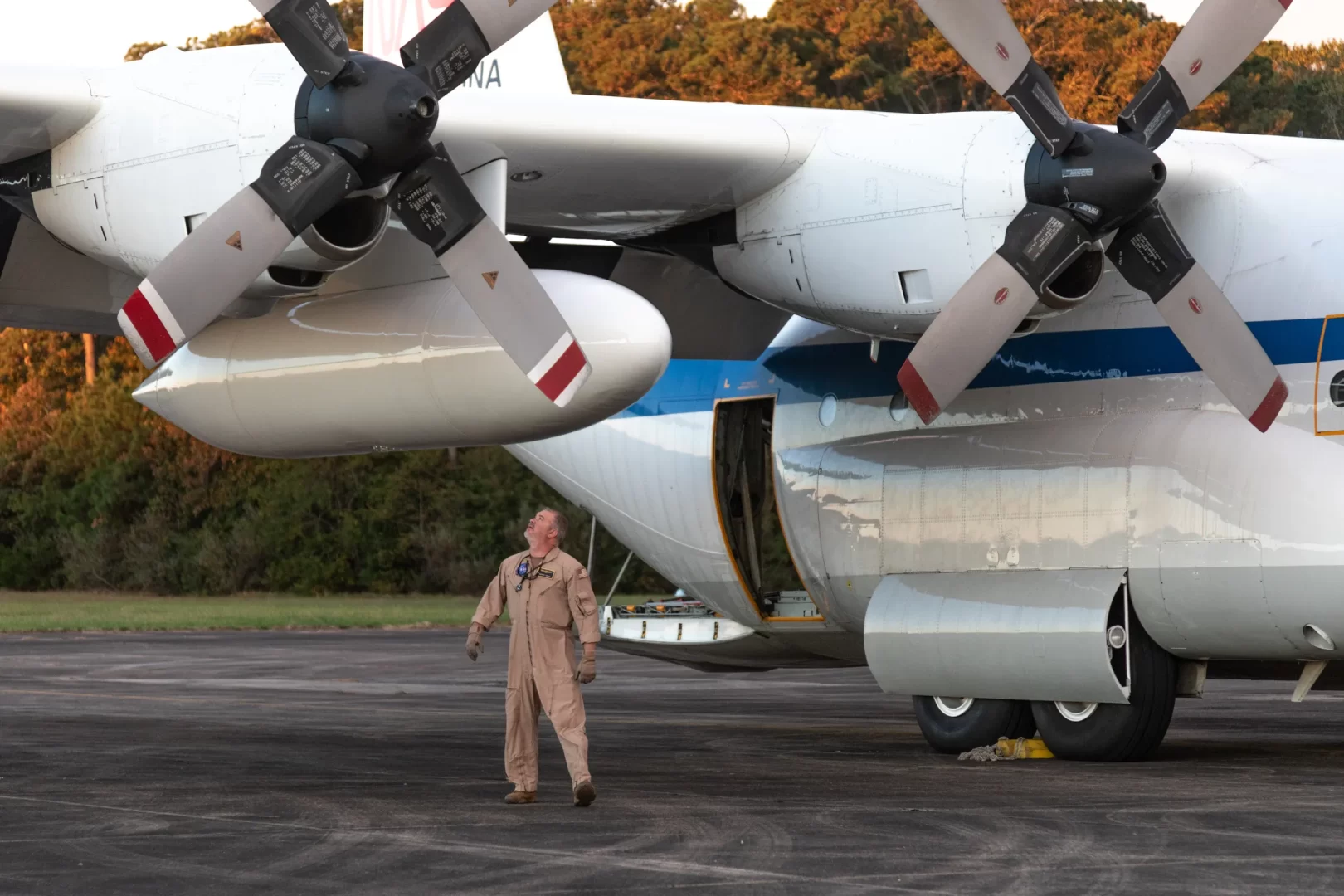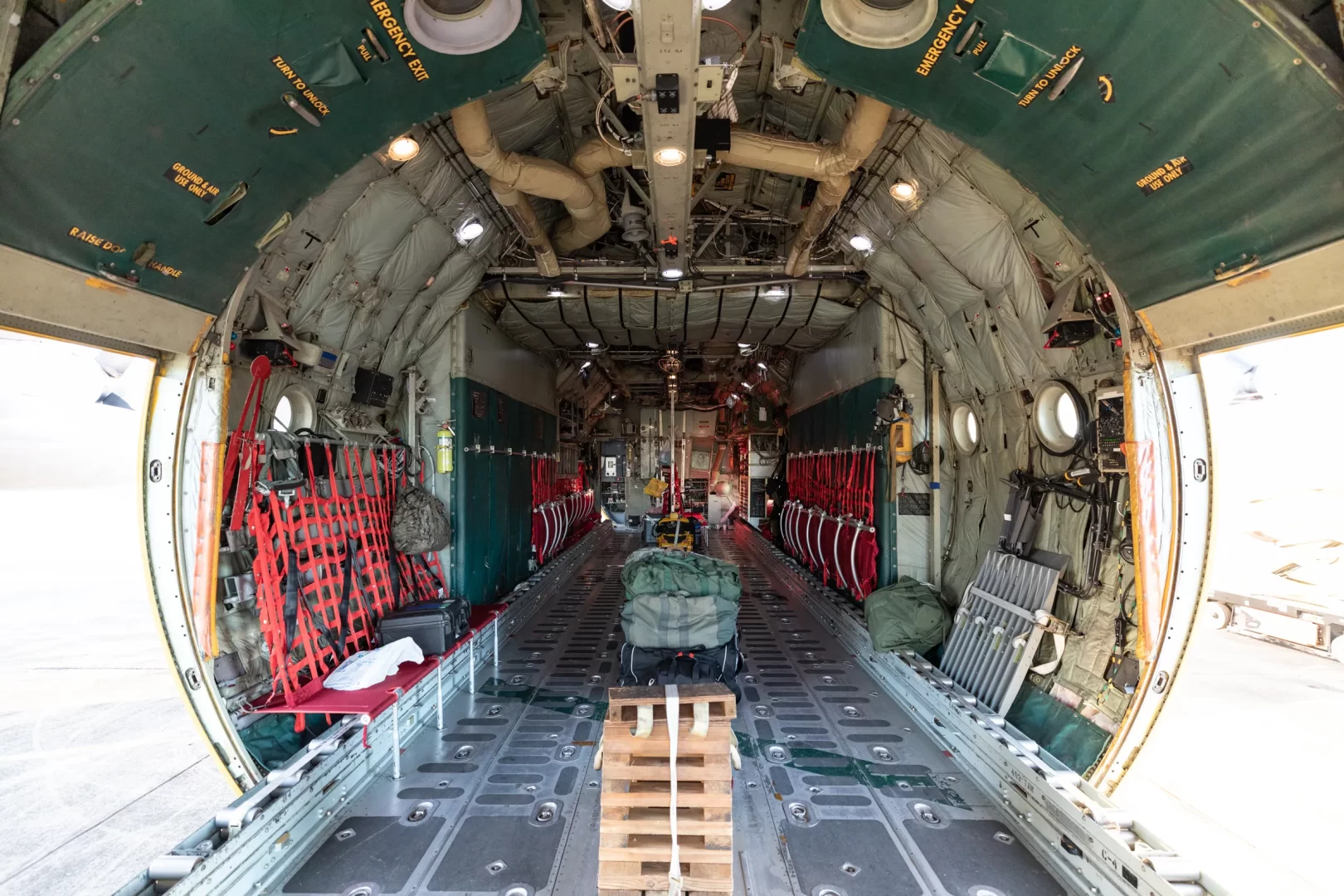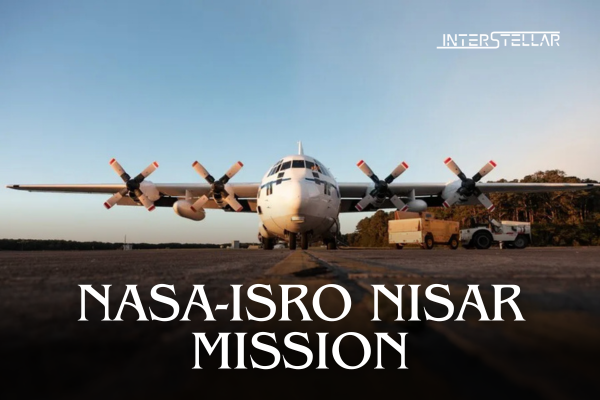NASA’s C-130 Hercules Transports Radar Antenna for NISAR Mission to India
NASA’s C-130 Hercules team is on a cargo mission to Bengaluru, India, supporting the NASA-ISRO Synthetic Aperture Radar (NISAR) mission. The aircraft departed from NASA’s Wallops Flight Facility in Virginia on Tuesday, October 15, starting a multi-leg journey spanning around 24,500 nautical miles and nearly 80 hours of flight time.
NASA-ISRO NISAR Mission: Objective
The mission’s main goal is to deliver NASA’s radar antenna reflector, a crucial component for the NISAR spacecraft. This equipment will be integrated into the joint NASA and Indian Space Research Organisation (ISRO) mission. The radar system will map Earth’s land and ice, providing vital data for climate research, disaster monitoring, and agricultural analysis.

NASA
NASA-ISRO NISAR Mission: Overview and Flight Path
The C-130 Hercules is making several stops before reaching India. After departing Virginia, it made a stop at March Air Reserve Base in California to collect the 2,800-pound radar antenna from NASA’s Jet Propulsion Laboratory. Further stops include Hickam Air Force Base in Hawaii, Andersen Air Force Base in Guam, Clark Air Base in the Philippines, and Hindustan Aeronautics Limited Airport in Bengaluru.
This flight marks the third cargo mission to India for the NISAR project. Previous transport missions occurred in July 2023 and March 2024. The multi-leg journey includes scheduled rest stops to maintain the aircraft’s and crew’s condition, ensuring smooth delivery across time zones and long-haul segments.

NASA
Importance of the Radar Antenna
The radar antenna is a major part of NASA’s contribution to the NISAR mission. This mission will provide high-resolution images for various environmental and scientific purposes, delivering valuable insights into Earth’s natural processes.





